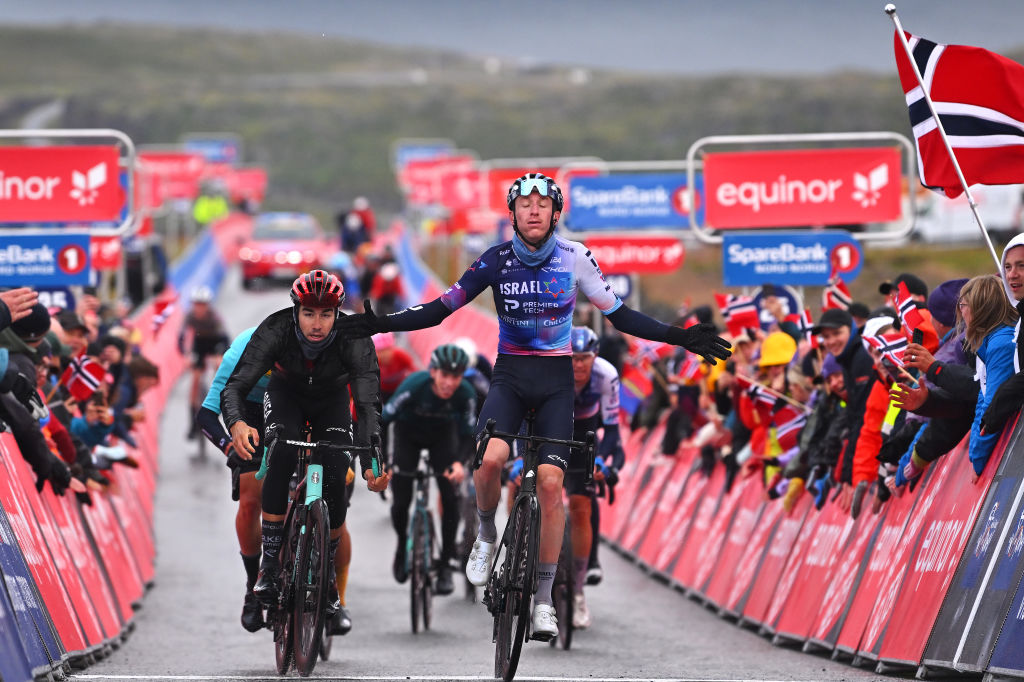Arctic Race of Norway bumps start one day after road race at Olympic Games
August 4-7 dates now earliest calendar slot for event in 11 years

The 2024 Arctic Race of Norway has shifted dates for the late-summer ProSeries race to August 4-7, with organisers ASO moving the start of the four-day event just one day following the men’s road race at the Paris Olympic Games.
Recognised as the world's most northern road race, the Arctic Race of Norway now has a mid-week finish rather than a traditional Sunday finale. The original dates were August 8-11, and now position the race in its earliest August calendar slot across an 11-year history. Last year’s edition of the Norwegian ProSeries stage race was held in the third week of August, the overall won by Stephen Williams (Israel-Premier Tech).
The change was made by organisers “due to a dense summer cycling season and a desire to harmonise the calendar”, according to an official statement.
The Arctic Race of Norway has been among a cluster of races, like Vuelta a Burgos, Tour du Limousin-Périgord and Tour of Denmark, that serve as tune-ups for the Vuelta a España, which begins August 17.
The date change still has the Norwegian race overlapping dates with Vuelta a Burgos, but has opened days between the starts of the two other races, Limousin starting August 13 and Denmark August 14.
All four stages across Norway this year are located above the Arctic Circle, in the north-central section of the country, with Bodø hosting the overall start and overall finish. Bodø hosted the opening stage of the inaugural event in 2013, a year that also saw all four stages above the Arctic Circle.
There were no changes made to the routes, with the race starting with 151.4km between Bodø to Rognan. Of three categorised climbs, the 8.6km ascent at Ljøsenhammeren with 20km to the finish might disrupt any chances of a bunch sprint finish.
Get The Leadout Newsletter
The latest race content, interviews, features, reviews and expert buying guides, direct to your inbox!
Gravel sections and the longest climb in the race’s history are part of stage 2 from Beiarn to Fauske. The summit of Beiarfjellet comes just 15.6km into the 175.1km stage, topping out at 608 metres, also the highest climb in the race’s history. Long and hilly dirt roads could prove decisive, the final 30.8km with an off-road circuit over the Rødas summit (1.3km at 6.4%) into the finish at Fauske.
The final two days have true mountaintop finishes, with stage 3 concluding on the climb of Sulitjelma (6.5km at 6.2%). The fourth and final stage passes the northern coast of the Helgeland coast, which is close to the Svartisen glacier, and offers a punchy climb for the overall finish atop Fjellveien (1.1 km at 9,2%), and it could shake up the overall standings.

Jackie has been involved in professional sports for more than 30 years in news reporting, sports marketing and public relations. She founded Peloton Sports in 1998, a sports marketing and public relations agency, which managed projects for Tour de Georgia, Larry H. Miller Tour of Utah and USA Cycling. She also founded Bike Alpharetta Inc, a Georgia non-profit to promote safe cycling. She is proud to have worked in professional baseball for six years - from selling advertising to pulling the tarp for several minor league teams. She has climbed l'Alpe d'Huez three times (not fast). Her favorite road and gravel rides are around horse farms in north Georgia (USA) and around lavender fields in Provence (France), and some mtb rides in Park City, Utah (USA).